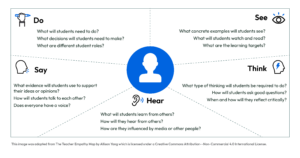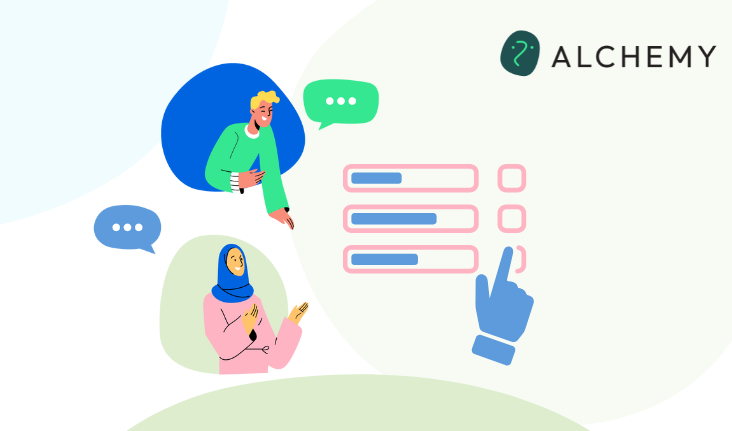Article
Empathy Mapping: Putting Learners at the Heart of All You Do

During the pandemic, we heard a call for empathy and connection. Learners wanted to know faculty understood the impact COVID-19 was having on their lives – and their learning. Not just what they were experiencing, but how they were feeling and why the rapid move to remote instruction was such a challenge. At the same time, isolation forced an urgent need for connection and community among their peers, especially in the online classroom. As remote learning continues to grow and learners are increasingly engaging in coursework while also working or managing other competing demands, the need for empathy and connection remains prevalent.
The good news: empathy in the classroom is directly related to creating connection and community. In fact, the most successful learning experiences are always designed with the learner in mind. The best course design process seeks to understand “Who are my learners?” And looks for answers beyond general demographics to include insight into students’ lives beyond the course. For example:
- Past learning experiences
- Potential barriers to learning
- Expectations for learning success
- Technology access, logistical issues and comfort level
- Identity and cultural upbringing
- Relationship with symbols, images, words and analogies used in course
- Food and financial insecurities
- Family or caregiver role
- Future desires and aspirations
These are just some factors that can be considered as part of understanding each of the students who are your course. Additionally, the more faculty can understand who is in their course, the more they can ensure they are not unintentionally inflicting their own bias into it.
We believe learner empathy is such an important part of learning design that it’s built right into our Purposeful Learning Framework. And one of our favorite tools to help faculty develop learner empathy is empathy mapping, a process that originated with design thinking, out of Stanford University. We’ve modeled our learner empathy mapping process from Alison Yang’s Teacher Empathy Map.
For our purposes, the first step to creating a learner empathy map is examining the course itself with the student experience as critical.
Broadly: what will students do, see, think, hear, and say in the course? We’re looking at this from a ‘Maslow Before Bloom’s’ perspective, with the understanding that a student’s basic needs must be considered before we expect them to successfully advance through levels of knowledge and skill.

The next step is to examine the students’ physical, emotional, social and intellectual needs.

With this information at hand, decisions can be made for how to create the best learning experience for the learners actually in the class, not according to general demographic data. That’s the real beauty of empathy mapping. How it helps faculty keep the learner at the center of the learning experience: guiding how to best connect learners with the course content – and each other – in ways designed to increase student engagement and success.


